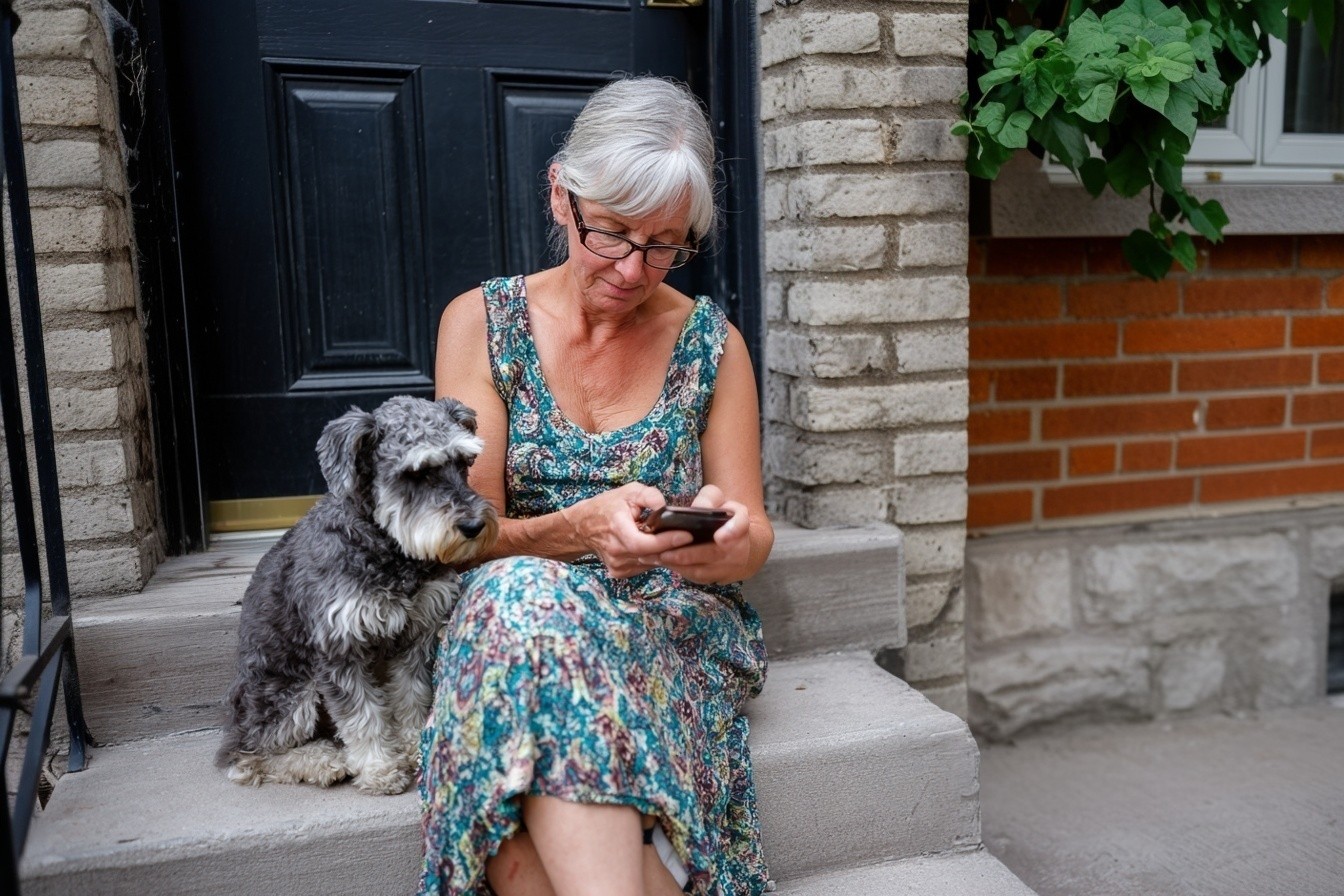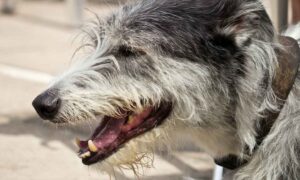What Makes a Dog Hypoallergenic (and Senior-Friendly)?
Let’s clear something up first: no dog is 100% hypoallergenic. But some breeds are much less likely to trigger sneezing, itchy eyes, or skin irritation. These pups shed less, drool less, and produce lower levels of the proteins that commonly cause allergic reactions.
What makes a dog “hypoallergenic”?
- Low-shedding coats that keep dander from floating all over your home
- Tight, curly, or silky fur that traps allergens instead of releasing them
- Less drool and oil on the skin—especially helpful for scent-sensitive seniors
What makes a dog senior-friendly?
- Compact size that’s easy to lift, walk, or bathe
- Calm temperament without wild bursts of energy
- Simple grooming routines—or breeds that tolerate professional grooming every 4–6 weeks
- Loyal companionship without separation anxiety
Pro Tip: Dogs with wiry or curly coats (like Poodles and Schnauzers) are often both hypoallergenic and great for older adults because their grooming needs are predictable, and their energy levels are manageable.
Best Hypoallergenic Dog Breeds for Senior
These low-shedding, small-to-medium dogs aren’t just easier on the allergies—they’re also low-maintenance, lovable, and perfect for slower-paced households.
1. Toy Poodle

Smart, affectionate, and happy to hang out on the couch after a short walk. Toy Poodles barely shed, and their curly coats trap dander. They’re also one of the easiest breeds to train.
- Weight: 6–9 lbs
- Why it works: Hypoallergenic curls + great with routines = ideal for seniors
- Helpful product: PetSafe Easy Walk harness for safe, no-pull strolls
Easy Walk® Harness, No Pull Dog Harness
The Easy Walk® Harness has been loved and trusted by millions of pet parents and trainers since 2004 to help improve walks around the world. Since this harness rests across your dog’s chest, you won’t have to worry about it putting pressure on your dog’s neck like when he wears a standard collar. The patented martingale loop on the front of the harness makes this harness great for dogs who pull.
We earn a commission if you make a purchase, at no additional cost to you.
2. Miniature Schnauzer

Alert but not hyper, the Mini Schnauzer loves companionship and does well in smaller homes. Their wiry coat doesn’t shed much but does require professional grooming every couple of months.
- Weight: 11–20 lbs
- Why it works: Great watchdog without being yappy, easy to bond with
- Bonus: Good pick for seniors who still enjoy daily walks
3. Maltese

A classic lap dog with a gentle personality. Maltese dogs love being with their humans, making them ideal for retirees. Their silky coat sheds very little but needs regular brushing to stay tangle-free.
- Weight: 6–8 lbs
- Why it works: Light as a feather and deeply affectionate
- Note: Can be prone to tear staining—use a damp cloth for daily eye care
4. Yorkshire Terrier

Tiny but confident, Yorkies are spirited, loyal, and compact. Their hair is more like human hair and rarely sheds, but it does require grooming or a short “puppy cut” every few weeks.
- Weight: 4–7 lbs
- Why it works: Great for seniors who want a vocal, social companion
- Grooming tip: Bathe every 2–3 weeks to keep their coat allergy-safe
5. Bichon Frise

Think cheerful cotton ball. The Bichon is playful but not wild, gentle, and thrives on attention. Their plush white coat is low-shedding but needs brushing a few times a week to prevent matting.
- Weight: 10–18 lbs
- Why it works: Great for allergy sufferers + has a joyful, silly personality
- ⚠ Heads Up: Sensitive to being left alone for too long—ideal for homebodies
6. Cavapoo (Cavalier King Charles Spaniel + Poodle Mix)

This hybrid combines the easygoing sweetness of a Cavalier with the hypoallergenic coat of a Poodle. Cavapoos are affectionate, friendly, and wonderfully adaptable.
- Weight: 10–20 lbs
- Why it works: Calmer than most doodles, excellent lap companions
- Pro Tip: Great for first-time dog owners
7. Schnoodle (Schnauzer + Poodle Mix)

Schnoodles are spunky, clever, and low-shedding. Depending on the mix, they can be laid-back or a bit energetic—but they’re always loyal and fun-loving.
- Weight: 10–25 lbs (mini to small standard sizes)
- Why it works: Good for semi-active seniors, easy to train
- Energy balance: Loves short games but settles quickly
8. Bonus: Senior Rescue Mixes
Many shelters have hypoallergenic mixes who are already house-trained and past the chewing phase. These older dogs make amazing companions—and often need less structure than a puppy.
- Why it works: Calmer temperament, grateful demeanor
- Where to look: Check breed-specific rescues or local humane societies
Key Considerations When Adopting a Dog for a Senior
Bringing home a dog in your later years can be life-changing—in the best possible way. But it’s important to choose a pet that fits the current lifestyle, not the one from 20 years ago.
1. Check the Housing Rules First
Whether it’s an HOA, apartment complex, or assisted living facility, pet policies can vary wildly.
- Independent living communities may have size or breed restrictions
- Assisted living often only allows pets under certain care plans or visiting hours
- Nursing homes typically don’t allow full-time pets, but therapy dog visits are common
2. Consider an Older Dog Over a Puppy
We get it—puppies are adorable. But they also chew, bark, and need constant training.
Older dogs, on the other hand:
- Are often already housebroken
- Tend to be calmer and less destructive
- Can relate to a slower pace and settle into routines quickly
⚠ Heads-up: Seniors who outlive their pets often worry about what happens after. Many rescues now offer “legacy” programs to rehome pets if needed—just ask.
3. Budget Matters—Small Dogs Are Often Cheaper to Maintain
Between vet bills, food, toys, and grooming, dog ownership adds up fast. Smaller, low-shedding breeds tend to be easier on the wallet:
- Food costs are lower (no 30-lb bags required)
- Smaller accessories—beds, crates, harnesses—are more affordable
- Grooming bills can still add up, but at-home kits make it manageable
Tips for Managing Allergies With a Dog at Home
Even with a hypoallergenic dog, you might still notice some sneezing or sniffles—especially during seasonal allergy spikes. But the good news? A few easy habits can dramatically reduce allergens in the home.
Keep It Clean (But Gentle)
- Brush your dog regularly—preferably outside—to remove loose dander
- Use a pet-specific shampoo like hypoallergenic oatmeal blends every 2–4 weeks
- Wipe paws and coats after walks to keep pollen from hitchhiking indoors
Pro Tip: Look for dog wipes made for sensitive skin—they’re great for quick cleans without full baths.
Use Air Support
- Run a HEPA air purifier in main living areas and bedrooms
- Vacuum with a HEPA filter—especially rugs and upholstery
- Wash dog beds weekly with fragrance-free, sensitive skin detergent
Bonus: Choose machine-washable pet beds and couches with removable covers for easier upkeep.
Keep Shared Spaces Allergy-Safe
- Use gated zones or PetSafe indoor fences to keep dogs out of certain rooms like bedrooms (especially for overnight allergy sufferers)
- Don’t let dogs lick your face or hands right before eating or touching your eyes
- Keep soft surfaces (blankets, throws) in regular laundry rotation
Reminder: Dander doesn’t just come from fur—it’s also in saliva and oils. Managing allergies is less about the dog, more about the routine.
Final Thoughts: The Right Dog Makes All the Difference
Whether you’re looking for a lap-sized cuddle buddy, a reason to walk around the block, or just someone to share quiet mornings with—there’s a low-shedding dog that fits.
You don’t have to choose between your health and companionship. With the right match, you can have both.
Whether it’s a Toy Poodle, a sweet senior rescue, or a joyful Bichon, these hypoallergenic breeds make the best kind of housemates: loyal, low-maintenance, and full of love.
Keep Reading:





















